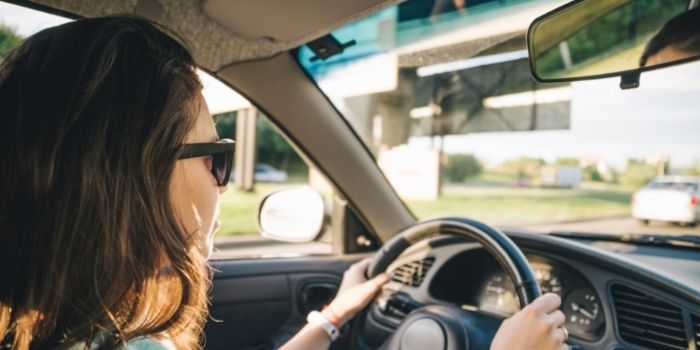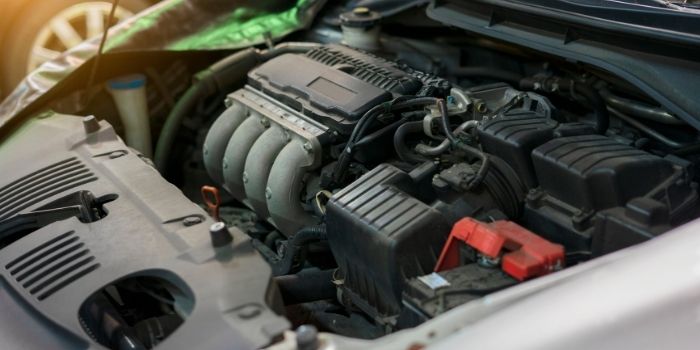
Those who have lost their sight in one eye can usually do most tasks and activities the same as anyone else, including piloting and driving.
Operating a vehicle if you are blind in one eye may come with a few inconveniences and may necessitate more diligence when driving, but it’s still possible in most states.
The biggest issue is due to having to prove to the government that you are capable of driving in spite of the slight affliction.
Otherwise, there aren’t many other restrictions, as not having sight in one eye in no way significantly gets in the way of driving a car.
Table of Contents
Getting a Driver’s License with One Eye
Different states in the Unites States (like Florida, Texas, Ohio, NY, etc) may have different laws if you are blind in one eye.
But all of them allows you to get a driver’s noncommercial vehicle license to drive, provided you have a horizontal field of vision that meets specific criteria.
Under California law, for example, as a driver you should have a minimum visual acuity of at least 20/200 in one eye, with or without correction.
For an unrestricted license you may require 20/40 or better in at least one eye.
First-time drivers experiencing blindness in one eye may run into some difficulties when obtaining a driver’s license.
Current drivers might get a license to drive with some restrictions and with a shorter term (for one or two years), which could also be a hassle.
Some of these requirements or restrictions that can be put on your license will generally be based on area they can drive in, the speed they can drive and only during the daylight.
One way to get the licence fast is by getting a written confirmation from your eye doctor indicating that the visual impairment doesn’t get in the way of being able to operate a motor vehicle.
Your doctor may give you an authorization letter after taking a vision test which can help you get a licence to drive.
Is it Safe to Drive When You Are Blind in One Eye?
Most states will let you drive a non commercial vehicle as long as you have good vision in at least one eye.
This is known as monocular vision.
For those with monocular vision, there may be specific rules that will need to be followed, including not driving at night.
Plus, you should be extra vigilant and safe when driving when you suffer from low vision in eyes.
Some of these safety rules you must follow include:
- Stay within your speed limit
- Do not drive when you are stressed
- Do not drive during rain or snowfall
- Try to drive large cars with big rear windows
- Keep a good distance between yourself and the car in front
- Use visual cues like road stripes and landmarks that can help you judge distances accurately
- Have a rear vision mirror on the side of your blind eye, or outside mirrors on both sides of your car
Things To Consider When Driving with Monocular Vision
As you lose your vision in one eye you are compromised with the lack of skills that helps you drive automatically.
If sight is lost in one eye, one’s driving style will need to change to accommodate this because the nose ends up becoming the new blind spot that the other eye will take some time to get used to.
When driving, they’ll need to turn their head to check for obstacles and cars in other lanes instead of relying on their peripheral vision.
Those who are blind in one eye often state that the biggest issue they have with driving is the various psychological factors that come with it.
They tend to psych themselves out and believe that the lack of eyesight in one eye means they now have less mobility than they did before, even though this is not necessarily true.
For better peace of mind and to ensure that the driver with partial blindness feels confident on the road, it may be a good idea to have someone ride along who can point out any blind spots or obstacles just to be sure.
Final Thoughts
The restrictions surrounding driving while blind in one eye vary from state to state.
While being blind in one eye may present certain challenges for driving, it does not mean the person has to stop driving altogether.
The first thing the person has to do is adapt to driving without relying on peripheral vision, and a trusted passenger along for the ride could help them drive with greater confidence.
Otherwise, yes, you can drive if you are blind in one eye with little to no problem.

Based in Orem (Utah) John Paterson graduated from Utah Valley University and has begun writing in 2009. He has a large wealth of experience in writing articles related to cars, automotive repair, wheels, cleaning/maintenance, and much more. He has also written instructional articles in a similar niche for a few online publications as well. Currently, he works as a mechanic in his personal garage shop where he loves serving his countrymen from his heart.




